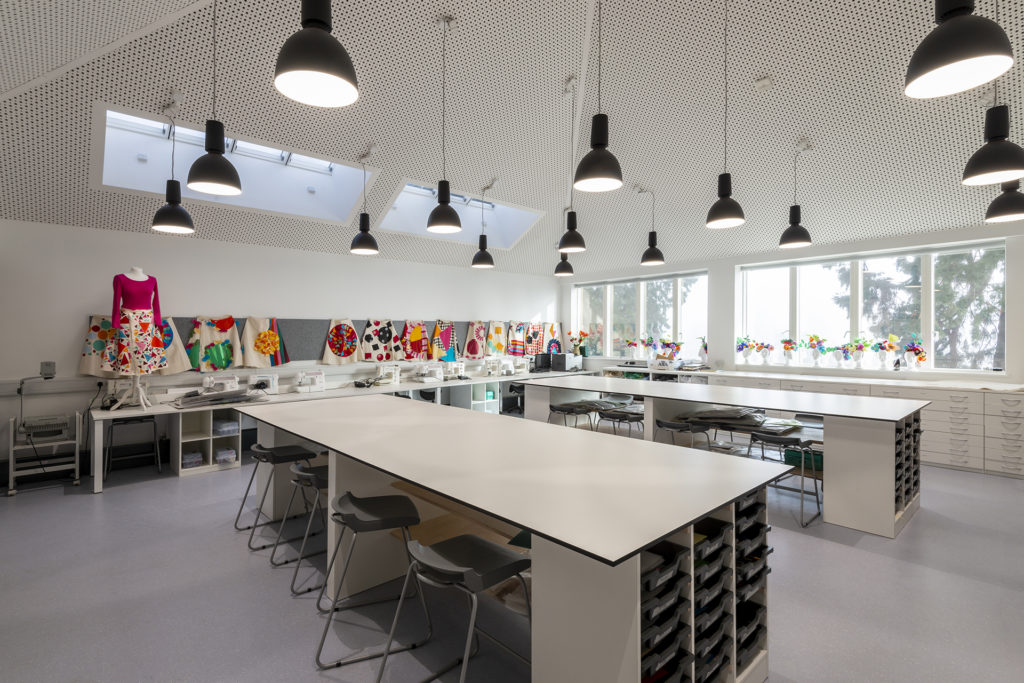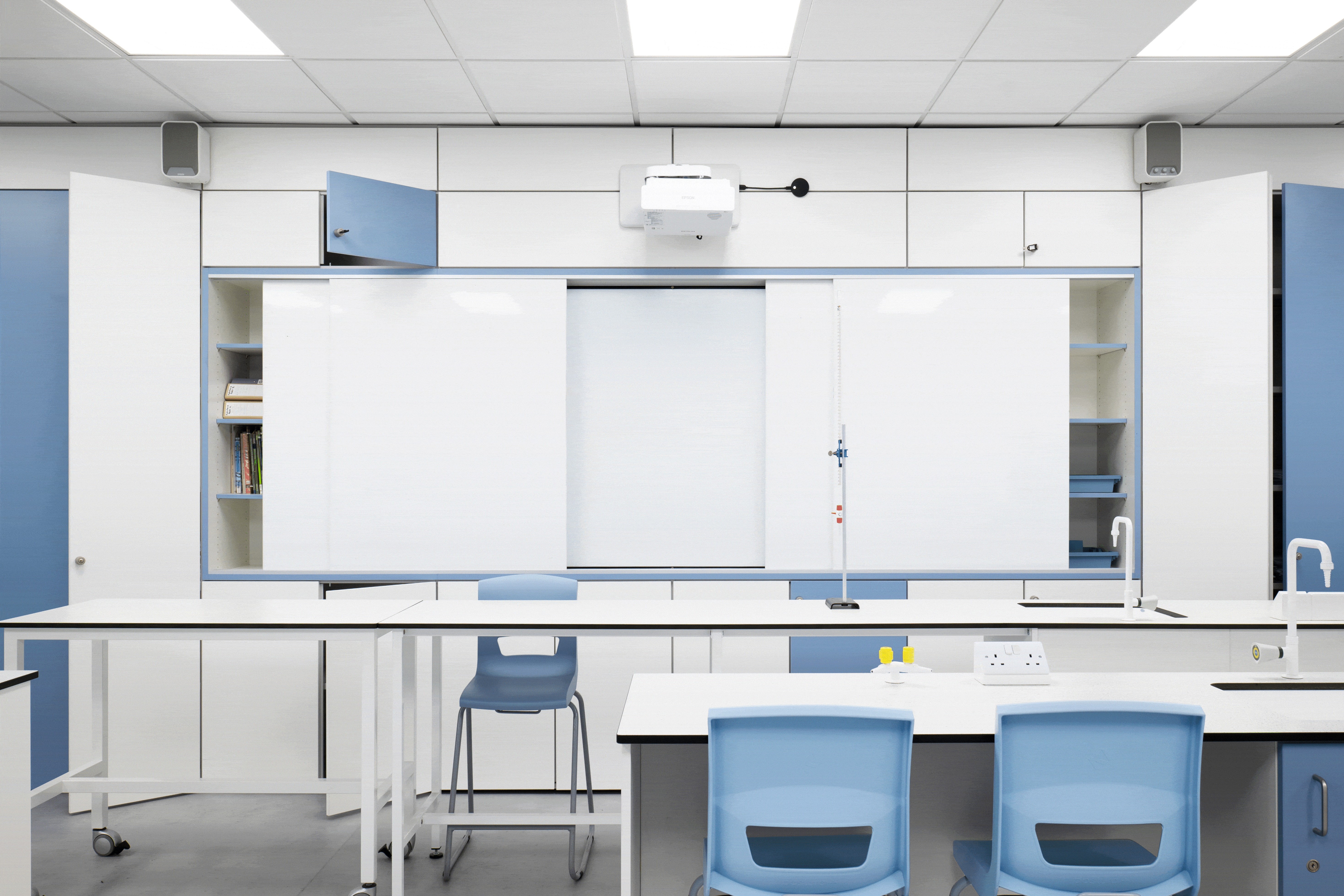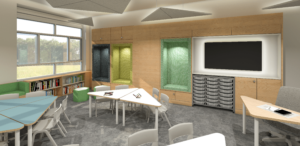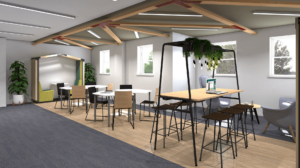Mention classroom design to any teacher and they will either enthuse about their attempts to maintain a forward-thinking workspace or sigh despondently about the poorly equipped area they have yet again been lumbered with.
This reaction tells us two things. Firstly, that classroom design is important. Really important. And secondly, school design is poorly considered and often subject to retrospective modification.
By contrast, all around us exist spaces that have undergone detailed and in-depth design processes. Supermarkets, shops, hotels, playgrounds –hours are spent completing thorough surveys to ensure the users of these facilities have a consistently positive experience. This consultation process is known as design thinking.
In this article we consider how design thinking can be applied to school environments, improving the user experience of the children and staff who spend the majority of their time in the classroom.
So what is design thinking?
Put simply, design thinking is a solution-based approach to problem-solving. It incorporates a 5-stage process to empower the designer in their quest for a successful outcome. By correctly implementing these 5 steps across a school renovation project, complex requirements can be assigned obtainable solutions.
Although the procedure is usually non-linear, it is pertinent to initially gain an understanding of the problem requiring a solution, beginning each task with a chance to ‘empathise’.
Empathise
This stage of proceedings involves consulting experts to discover more about the specific areas of concern. Through observation, engagement and empathy, the design team must firmly align themselves with the motivation and experiences of those they are working to help. In this instance, immersion in the physical environment can be an excellent way of achieving a deeper personal understanding of the issues involved.
In a classroom setting, the problem seeking rectification might vary from ‘how to engage children with their learning’ to ‘how to encourage certain types of behaviour’. Once the challenge has been identified, a consultation with the experts needs to take place. And in this case, the experts are those who use the space most frequently. This demands that consultation includes all parties, from the cleaning staff to the senior leadership team, in orderto satisfy the visions and values of everyone within the school.
After this consultation period, there should be time for observation and audit. To move forward, it is crucial to understand exactly how any space is being currently used.
DefineIn this definition stage, it is useful to gather all the information that has been collated during the ‘empathise’ period. This is where the analysis of observations will inform and identify the core problems that require addressing. It is crucial to the design process to define the problems in a human-centred manner. Statements should not be generalised, instead, specific to the individuals they are seeking to target.
When considering a classroom setting, this is the opportunity to identify the core purpose of the new space and decide upon the intended outcome of any redesign. For example, if the main aim of a science lab refresh is to create an area that promotes problem-solving, then every design choice should be traceable back to this outcome.
Ideate
The third stage of the design thinking process involves the generation of ideas. By now, there should be a clear vision for the projected work, and an understanding should be developing between the designers and client. This is the time to consider and develop solutions for the statements that were created in the previous stage. It is important in this instance to avoid falling into the trap of stereotype and convention. Members of the school body may not even be aware of what it is they require, so it is the job of the design team to think outside of the box and push them in new directions. Don’t be afraid to be bold with suggestions, the best designs can often be met with initial resistance. As long as the design remains true to the values of the school, nothing should be off-limits.
Prototype
At this juncture, it is time to produce prototypes of the proposed projects. Although classroom design does not naturally lend itself to the creation of prototypes, it can still prove to be a valuable exercise. If your project involves changing the layout of a room, use existing furniture to mock up any potential changes as best you can. If renovation is on a larger scale, the design team should be able to walk you through 3D designs and interactive mock-ups to give an insightful impression into the proposed work. It is during this stage that impracticalities or previously unconsidered issues will be brought to the attention of the design team.
Test
As the 5 step process reaches its conclusion, it’s vital that the project doesn’t lose momentum. If anything, now is the time to ramp things up to ensure high-quality outcomes. Every item of furniture that has been introduced into the school environment must be justified in relation to the original design statements. New layouts should be evaluated to guarantee and ensure their longlasting success. This is the time to question if the project fulfils the brief, and if it doesn’t, then it needs to be modified in order to do so. Non-linear process
To summarise, the design thinking process is a flexible collaboration between the designers and the users. The emphasis should be on making plans that flourish in their intended environment. Schools should be encouraged to take brave new steps in their outlook, breaking the mould of the conventional classroom setting, not just for the sake of it, but because it improves the engagement, interaction, and learning, of all pupils
Design Thinking Snapshot
Empathising: Understanding the human needs involved.
Defining: Re-framing and defining the problem in a human-centric way.
Ideating: Creating ideas in brainstorming sessions.
Prototyping: Adopting a hands-on approach to test the intended implications.
Testing: A continuous process to assess the fulfilment of the brief



